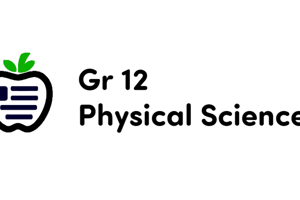Podcast
Questions and Answers
What is the primary reason sound cannot be polarized?
What is the primary reason sound cannot be polarized?
- Sound does not need a medium to travel.
- Sound travels slower in denser media.
- Sound only reflects and refracts.
- Sound is a longitudinal wave. (correct)
Which phenomenon describes the effects of sound traveling faster in warm air compared to colder air?
Which phenomenon describes the effects of sound traveling faster in warm air compared to colder air?
- Reflection
- Refraction (correct)
- Diffraction
- Interference
How does destructive interference help in noise reduction in industrial settings?
How does destructive interference help in noise reduction in industrial settings?
- By amplifying the sound waves from machines.
- By generating out-of-phase sound waves to cancel noise. (correct)
- By solely using reflections to redirect sound.
- By producing sound waves in phase with machine noise.
What term describes when sound waves are reflected off a surface, resulting in an echo?
What term describes when sound waves are reflected off a surface, resulting in an echo?
Which type of wave motion does sound demonstrate due to its ability to undergo interference?
Which type of wave motion does sound demonstrate due to its ability to undergo interference?
What primarily influences the speed of sound waves in a medium?
What primarily influences the speed of sound waves in a medium?
How do sound waves behave in warmer air compared to cooler air?
How do sound waves behave in warmer air compared to cooler air?
What occurs when sound waves enter a vacuum?
What occurs when sound waves enter a vacuum?
In which type of wave does matter oscillate parallel to the direction of energy transfer?
In which type of wave does matter oscillate parallel to the direction of energy transfer?
What happens when two bodies have the same natural frequency?
What happens when two bodies have the same natural frequency?
Flashcards are hidden until you start studying
Study Notes
Properties of Sound Waves
- Sound is a form of energy traveling as longitudinal mechanical waves.
- Sound demonstrates four wave phenomena: reflection, refraction, diffraction, and interference; it is not capable of polarization.
- A medium is required for sound to propagate.
Wave Phenomena
- Reflection: An echo occurs when sound waves bounce off surfaces.
- Refraction: Sound speed varies with different media and air temperatures; it travels faster in warm air, which can create effects similar to light refraction, like mirages.
- Diffraction: Sound waves can bend around obstacles, such as doorways, due to their long wavelengths (approximately one meter).
- Interference: Sound waves can interfere with one another, demonstrating wave behavior.
Experiment to Demonstrate Sound as Wave Motion
- Equipment included two speakers connected to the same signal generator.
- Walking in front of the speakers illustrates sound reflection with straight parallel waves.
- Changing water depth illustrates sound intensity variations due to interference.
- Conclusion: Only waves exhibit interference, confirming sound as wave motion.
- Destructive interference: Can reduce noise pollution by generating out-of-phase sound waves to cancel machine noise.
Speed of Sound
- Sound travels at different speeds in various media; speed increases with density and elasticity.
- Sound speed is faster in water than in air and in metals compared to water.
- Sound travels quicker in warm air than cool air due to faster-moving air particles facilitating quicker energy transfer.
- Speed of sound in dry air at 20 °C is 343 m/s.
- All sounds, regardless of pitch, travel through air at the same speed.
Experiment Showing Sound Requires a Medium
- Equipment included a sealed bell jar connected to a vacuum pump and a battery-powered bell.
- When the bell rings inside the jar, sound is audible; this decreases as air is evacuated.
- In a complete vacuum, no sound is detected, confirming the necessity of a medium for sound transmission.
Natural Frequency and Resonance
- Natural frequency is the specific frequency at which an object oscillates freely, pertinent to musical instruments and other vibrating bodies.
- Resonance occurs when energy transfers between two bodies sharing the same or similar natural frequencies.
Studying That Suits You
Use AI to generate personalized quizzes and flashcards to suit your learning preferences.




